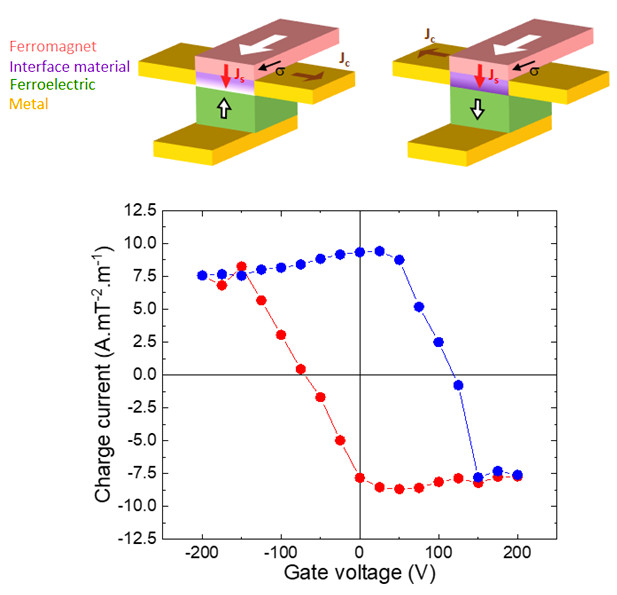Electron spin—a fundamentally quantum property—is central to spintronics, a technology that revolutionized data storage, and that could play a major role in creating new computer processors. In order to generate and detect spin currents, spintronics traditionally uses ferromagnetic materials whose magnetization switching consume high amounts of energy. In the April 22, 2020 issue of Nature, together at Spintec Laboratory (CNRS/CEA/Université Grenoble Alpes) and the CNRS/Thales Laboratory, we recently presented an approach that can detect spin information at low power using a non-magnetic system. This research opens the way towards spintronic devices that operate on ferroelectricity rather than on ferromagnetism, thereby consuming 1,000 times less energy.

(Top) The system developed is a ferromagnetic material that can generate a spin current and inject it into an interface material, in which it is converted into a charge current. Traditionally, in order to change the sign of the charge current produced, the magnetization of the ferromagnetic material must be reversed by applying a magnetic field or a powerful current. Here this is produced by reversing the polarisation of the ferroelectric material using an electric field. (Bottom) Experimental curve showing the evolution of the charge produced as a function of the voltage applied to the ferroelectric material. © CNRS/Thales and Spintec.
References:
- Non-volatile electric control of spin–charge conversion in a SrTiO3 Rashba system, Paul Noël, Felix Trier, Luis M. Vicente Arche, Julien Bréhin, Diogo C. Vaz, Vincent Garcia, Stéphane Fusil, Agnès Barthélémy, Laurent Vila, Manuel Bibes, Jean-Philippe Attané, Nature 580, 483–86 (2020)
- News and view: Electric control of a spin current has potential for low-power computing, by Stefano Gariglio.
Contacts
- At SPINTEC: Jean-Philippe Attané.
- At UMphy: Manuel Bibes.




